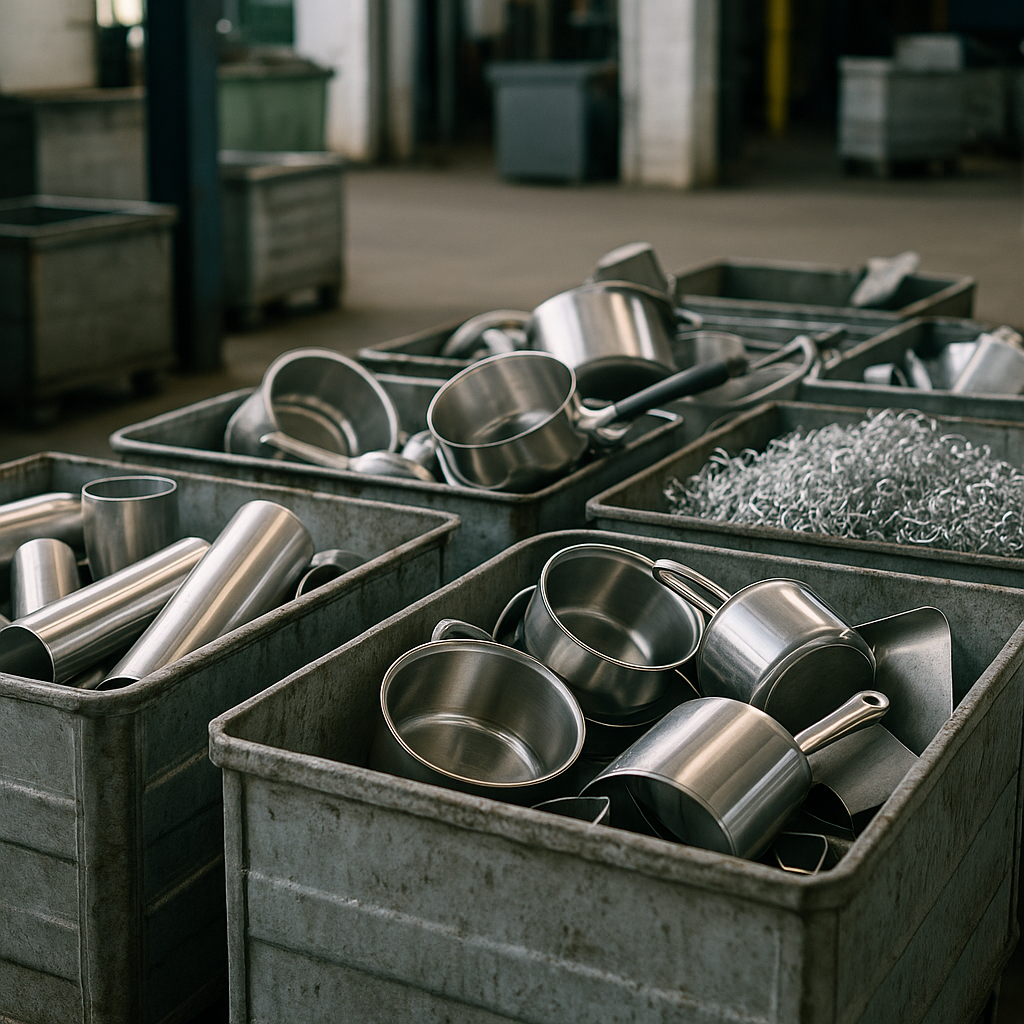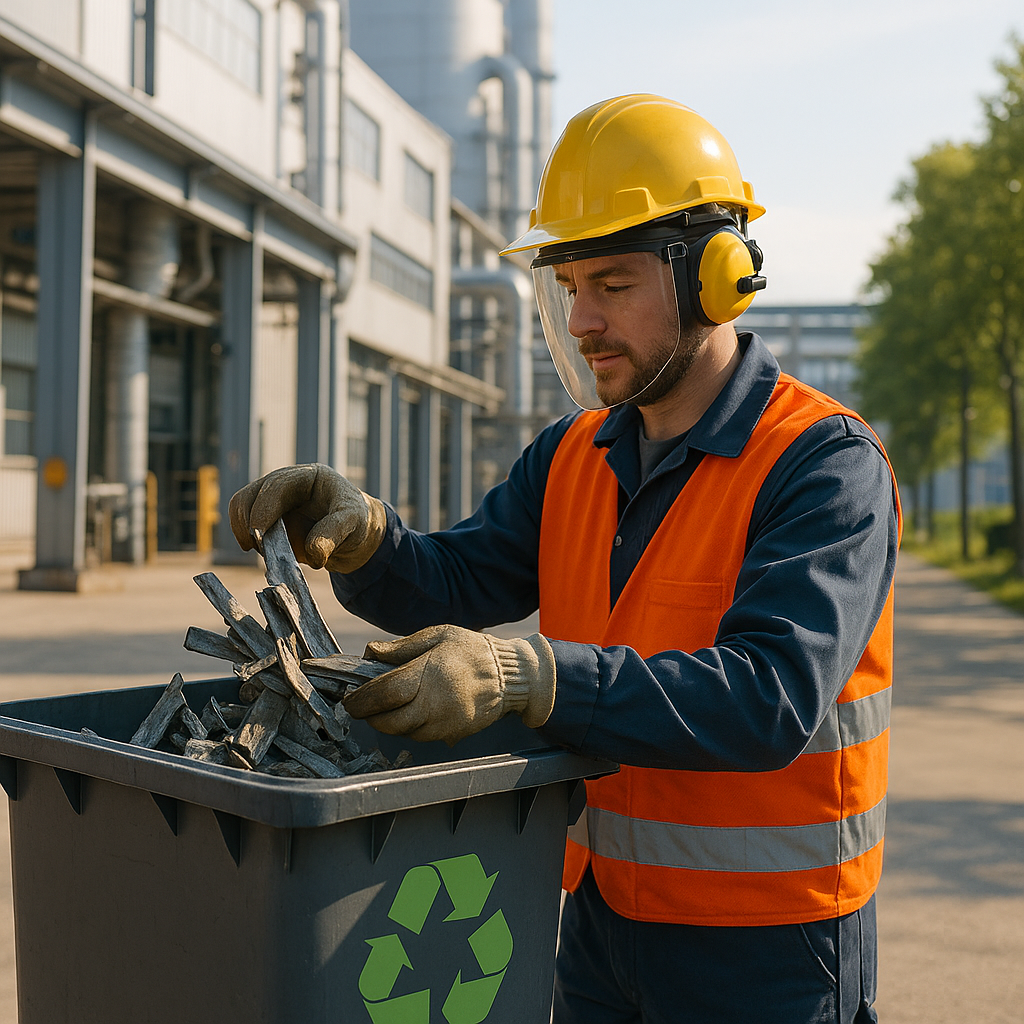5901 Botham Jean Blvd, Dallas, TX 75215
Waste Steel Recycling: Types, Benefits, and Future of Sustainable Steel
September 25, 2025Did you know that steel has a global recycling rate of 87%? This makes it one of the most recycled materials on our planet. Its exceptional properties allow it to be reborn countless times without losing strength or performance—a key factor in its environmental value.
Waste steel refers to discarded steel materials that can be recycled. These materials come from diverse sources including manufacturing scraps, end-of-life vehicles, outdated appliances, and demolished buildings. The versatility of steel means nearly every sector generates recyclable waste.
Steel recycling is a pillar of modern waste management. By reprocessing this material, we conserve valuable natural resources like iron ore, coal, and limestone.
For every ton of steel recycled, approximately 2,500 pounds of iron ore, 1,400 pounds of coal, and 120 pounds of limestone remain untouched in the earth. This conservation extends to water resources as well, with recycling saving up to 40% of the water typically needed in steel production.
What Are the Main Types of Waste Steel?
Waste steel is categorized into three distinct types based on origin, quality, and processing requirements. Understanding these categories is crucial for recyclers and steel producers, as each type requires specific handling methods to maximize resource recovery.
Here are the three primary categories of waste steel:
- Home Scrap – Generated within steel mills during the production process
- Prompt/Industrial Scrap – Created during manufacturing processes
- Obsolete Scrap – Collected from end-of-life products that have completed their useful lifecycle
Home Scrap
Home scrap is steel waste created within the steel mill during the production process. This material never leaves the facility and is immediately recycled back into steelmaking.
Common sources of home scrap include leftover pieces, trimmings, and materials that don’t meet quality standards. For example, when a steel mill produces large sheets or beams, the cutting process generates edge trimmings that become home scrap.
The main advantage of home scrap is its purity. Since it hasn’t been mixed with other materials or exposed to contaminants, steel mills can easily reincorporate it into their production cycle. This type accounts for approximately 21% of all recycled steel in the United States.
Prompt/Industrial Scrap
Prompt scrap, also known as industrial scrap, is generated during downstream manufacturing processes after steel leaves the mill. It is created when manufacturers fabricate steel products.
Examples of prompt scrap include metal stampings from automotive manufacturing, cuttings from appliance production lines, and excess material from construction steel fabrication. When a car manufacturer stamps out body panels, the remaining steel sheet becomes valuable prompt scrap.
This type typically has a known chemical composition and remains relatively clean. Prompt scrap is often returned to steel mills within weeks or months of its creation through established supply chains. It represents about 22% of steel recycling volume and is highly valued in the recycling industry due to its consistency and quality.
Obsolete Scrap
Obsolete scrap comes from products that have reached the end of their life. This category makes up the largest portion of recycled steel, approximately 57% of the total volume in the United States.
Common sources include:
- Junked vehicles and automotive parts
- Demolished buildings and infrastructure
- Discarded household appliances like refrigerators and washing machines
- Outdated industrial equipment and machinery
Obsolete scrap presents more recycling challenges than the other categories. These items often contain multiple materials beyond steel. For example, a scrapped car includes not just steel but also plastic, rubber, glass, and other metals.
The quality of obsolete scrap varies widely, requiring extensive sorting, cleaning, and processing before recycling into new steel products. However, its recovery is vital for conserving natural resources and reducing environmental impact.
Recycling obsolete scrap into new steel uses about 75% less energy than producing steel from raw materials, making it economically and environmentally beneficial despite processing challenges.
| Scrap Type | Quality | Processing Requirements | Recycling Rate (%) |
|---|---|---|---|
| Home Scrap | High | Minimal, used directly in steel mills | 21 |
| Prompt/Industrial Scrap | High, with known composition | Minimal, promptly returned to mills | 22 |
| Obsolete Scrap | Variable, often mixed with contaminants | Extensive sorting and cleaning needed | 57 |
Understanding these three categories helps recyclers determine the most efficient processing methods and allows steel manufacturers to source appropriate materials for various steel products based on quality requirements.
The Process of Waste Steel Recycling

While the benefits of recycling waste steel are clear, understanding how the recycling process works provides valuable insight into why this practice is so efficient and sustainable. Steel recycling is a highly developed industry supported by advanced technologies that allow steel to be recovered and reused indefinitely without losing its strength or durability. Below is a step-by-step overview of the typical process used to recycle waste steel.
1. Collection and Transportation
The process begins with the collection of scrap steel from multiple sources such as construction and demolition sites, automotive dismantlers, manufacturing facilities, and municipal recycling centers. Once collected, the scrap is sorted into categories (home scrap, prompt scrap, and obsolete scrap) before being transported to recycling facilities or steel mills. Efficient logistics play a crucial role here, ensuring that steel is delivered promptly to minimize storage costs and optimize recycling flow.
2. Sorting and Preparation
At the recycling facility, steel must be carefully separated from other materials like aluminum, copper, plastic, and glass. Advanced methods such as magnetic separation are commonly used because steel is ferromagnetic, making it easier to isolate from non-ferrous materials. Obsolete scrap often requires additional processing such as shredding, cleaning, and removal of coatings or contaminants to meet the quality standards needed for steelmaking.
3. Shredding and Melting
Once sorted, larger pieces of steel are shredded into smaller fragments to increase surface area, which speeds up melting. The shredded steel is then placed into a furnace, most commonly an electric arc furnace (EAF), which uses high-powered electric arcs to melt the scrap at temperatures exceeding 3,000°F. EAF technology is preferred for its energy efficiency and lower emissions compared to traditional blast furnaces.
4. Refining and Purification
After melting, the molten steel undergoes a refining stage to remove impurities such as excess carbon, sulfur, and phosphorus. Alloying elements may also be added during this stage to achieve specific performance properties for different steel grades. This step ensures that the recycled steel meets the same strict quality requirements as virgin steel.
5. Solidification and Forming
The purified molten steel is poured into molds or cast into semi-finished shapes such as billets, blooms, or slabs. These forms are then processed into final steel products through rolling, forging, or other shaping techniques. Recycled steel can be used in a wide range of applications, from construction beams and automotive parts to packaging and household appliances.
6. Distribution and Reuse
Finally, the recycled steel products are distributed to manufacturers and industries worldwide, entering a new lifecycle of use. Because steel can be recycled indefinitely without degradation, this cycle can repeat countless times, making it a cornerstone of the circular economy and modern sustainable manufacturing.
By following this streamlined process, the steel industry is able to reduce waste, conserve natural resources, and cut down on carbon emissions—while delivering high-quality materials for global use.
What Are the Benefits of Recycling Waste Steel?

Recycling waste steel offers significant benefits for both our environment and economy. This practice is essential in a world where sustainability is a necessity. Let’s explore the valuable advantages of redirecting steel from landfills back into production cycles.
Environmental Benefits
Steel recycling significantly reduces carbon emissions compared to using virgin steel. By choosing recycled steel, manufacturers cut CO2 emissions by 58%, playing a crucial role in combating climate change and reducing industrial carbon footprints.
The energy savings are also remarkable. Recycling steel uses 60% less energy than producing it from raw materials. For instance, recycling steel from vehicles could power 18 million homes for a year.
Conserving natural resources is another significant benefit. Recycling one ton of steel saves 1.5 tons of iron ore, half a ton of coal, and reduces water usage by 40% compared to traditional methods. Steel’s ability to be repeatedly recycled without losing strength or quality makes it ideal for circular economy models.
Landfill diversion is another visible benefit. Steel occupies valuable landfill space and doesn’t degrade over time. Recycling prevents millions of tons of material from filling landfills, reducing risks of soil and groundwater contamination.
Economic Advantages
The steel recycling industry generates substantial employment opportunities. According to the Institute of Scrap Recycling Industries (ISRI), the industry supports over 506,000 American jobs, from collection and processing to manufacturing with recycled materials.
Manufacturers benefit from cost reductions as well. Using recycled steel saves on raw material extraction, transportation, and processing costs, often leading to more competitive pricing for consumers on products like appliances and vehicles.
The economic impact is vast. The U.S. recycling industry generates nearly $117 billion annually, with steel recycling significantly contributing to this figure. Iron and steel scrap generate an estimated $23 billion in domestic sales and exports.
Market stability is also key. Recycled steel provides a reliable domestic material source, helping buffer against price volatility in global raw material markets, allowing manufacturers to plan and operate more effectively.
| Benefits | Details | Impact |
|---|---|---|
| Reduction in Raw Material Usage | Saves 2,500 pounds of iron ore, 1,400 pounds of coal, and 120 pounds of limestone per ton of steel recycled | Conserves natural resources |
| Energy Conservation | Uses 60-75% less energy than primary steel production | Reduces energy dependency |
| CO2 Emissions Reduction | Reduces CO2 emissions by 58-85% | Mitigates climate change |
| Water Conservation | Saves 40-50% of water | Preserves water resources |
| Reduction in Landfill Waste | Prevents about 2 tons of waste per ton of recycled steel from entering landfills | Preserves landfill space and reduces soil/groundwater contamination |
| Job Creation | Supports over 506,000 jobs in the US | Boosts local economies |
| Cost Reduction | Saves approximately $505 per ton compared to virgin steel | Lowers manufacturing costs |
| Market Stability | Provides a consistent supply of material | Stabilizes prices and supply chains |
How These Benefits Affect Everyday Life
These benefits extend beyond statistics, impacting our daily lives. Reduced manufacturing costs help keep prices lower for everyday products. From vehicles to kitchen appliances, recycled steel plays a vital role in their creation.
Environmental benefits lead to healthier communities with cleaner air and water. Recycling steel prevents significant mining waste and pollution, preserving local ecosystems.
The steel recycling industry strengthens local economies through job creation and tax revenue, providing competitive wages and contributing to community stability and growth.
Steel recycling exemplifies successful circular economy principles. Its benefits ripple through our environment, economy, and communities, showcasing how sustainable practices can create positive outcomes on multiple levels.
Conclusion: The Future of Waste Steel Recycling
Steel recycling is a cornerstone of sustainable industry, offering significant environmental and economic benefits. By reusing steel scrap, the industry reduces energy consumption by up to 60% compared to traditional production methods. This efficiency results in lower carbon emissions, with recycled steel production emitting about 0.4 tons of CO2 per ton compared to 1.4 tons in primary production.
The future of steel recycling looks promising as technological advancements continue to transform the industry. Innovations in sorting technologies using AI and machine learning will enhance efficiency and material recovery rates. Energy-efficient melting techniques will further minimize the environmental footprint while expanding applications for recycled steel in various industries. These developments affirm steel’s vital role in the circular economy, ensuring valuable materials remain in productive use for extended periods.
For professional guidance on steel recycling solutions that can benefit your organization, contact Okon Recycling at 214-717-4083. Our team can help you implement effective recycling strategies that support environmental sustainability while realizing economic benefits.
